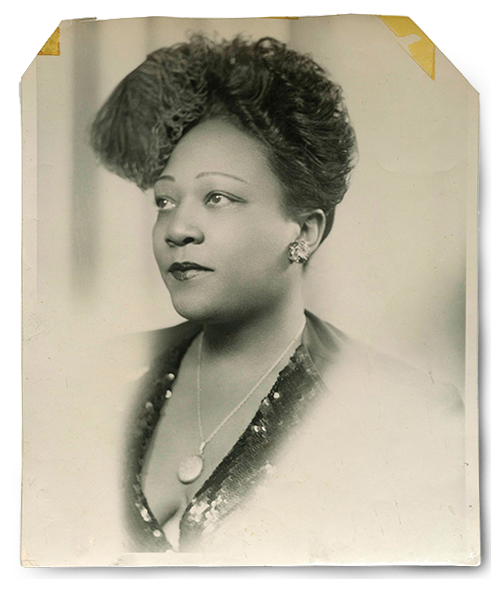If you’ve never heard of the woman in the title—and most haven’t—The Passion of Mary Cardwell Dawson could spark an infatuation with a larger-than-life heroine who stood barely five feet tall in heels and fancy hats. Premiering at the Glimmerglass Festival on August 5, Sandra Seaton’s new “play with music” celebrates a classical soprano who, when her own dreams were dashed, made a bigger dream come true for her people.
Born in North Carolina, Dawson trained at the New England Conservatory of Music, in Boston, cleaning a dentist’s office to pay her way. But when she graduated, 31 years old and the only Black person in her class, American opera houses weren’t hiring singers who looked like her. Undaunted, she threw herself into teaching. The mammoth choral ensembles she led won national awards and played the New York World’s Fair.

Her crowning achievement was the creation, in 1941, of the National Negro Opera Company, seen in Pittsburgh, Washington, Chicago, and New York in staples such as Aida, Carmen, and Faust as well as in new operas by the Black American composers Robert Nathaniel Dett and Clarence Cameron White. In 1956, Dawson even pulled off a semi-staged performance of White’s Ouanga at the Metropolitan Opera House. While hers was not the first venture of its kind, it had the longest history and achieved the most impressive results, disbanding only at her death, in 1962.

Little documentation survives: a poster here, a program there, a newspaper clipping or two. How tantalizing to read of La Julia Rhea, the reportedly spellbinding heroine of Dawson’s inaugural Aida, at Pittsburgh’s Syria Mosque—or to discover Lillian Evanti, once the toast of Paris as the Hindu priestess Lakmé, and later Dawson’s Violetta in an open-air La Traviata that played to a crowd of 15,000 in Washington, D.C. How infuriating to learn that on separate occasions Rhea and Evanti were invited to audition for the Metropolitan Opera, only to show up, sing, and be blown off.
At this late date, music lovers attuned to the discouragements and injustices endured by generations of Black artists may feel they’ve seen the movie before. But, actually, the narratives we know much better belong to winners whose triumphalist timeline many can rattle off with ease.

Nineteen fifty-five: Marian Anderson, 57, breaks the Met’s color barrier as the fortune-teller Ulrica, a supporting character in Verdi’s Un Ballo in Maschera.
Nineteen sixty-one: Leontyne Price, 34, conquers the Met as Leonora, the heroine of Verdi’s Il Trovatore, a coronation confirmed by a cover story in Time magazine. Same year: at the Bayreuth Festival, founded by Richard Wagner, Grace Bumbry steps out as the pagan love goddess Venus in Tannhäuser over howls of protest from defenders of Aryan purity. “My grandfather wrote for the colors of voices,” Wieland Wagner retorted, “not for the colors of skin.”
Nineteen eighty-nine: singing “La Marseillaise” in Paris for the bicentennial of the storming of the Bastille, Jessye Norman has the whole world in her hand.
Awaiting the comprehensive history of Black American artists in opera that has yet to be written, we now have The Passion of Mary Cardwell Dawson, starring the veteran Met mezzo Denyce Graves—“Broadway” to her teenage schoolmates, who early on sensed her flair for the dramatic. As seems entirely fitting, her role builds to a musical finale, scored by Carlos Simon.

Earlier she coaches soloists for an outdoor concert, even as she wrestles through a crisis of conscience. Suppose it rains? The only nearby hall maintains a strict segregated-seating policy. To sing or not to sing under such circumstances? That is the question.
And here’s another. Did any of this really happen? “While the specific situation is fictionalized,” the playwright answers, “it is representative of the obstacles Dawson faced—and of her great determination.” —Matthew Gurewitsch


 Discover
Discover